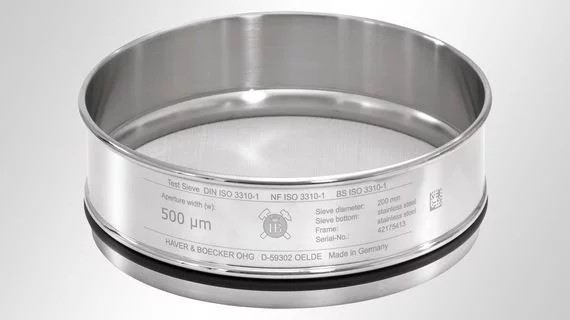How are test sieves marked for identification ?


Author : Vikram Shah / 2 Minute Read
Why Label Test Sieves?
The ASTM E11 and ISO 3310-1 Standards for Test Sieves have rules for the identification of Test Sieves.
Both Standards dictate that all test sieves must be marked with the nominal aperture size, the standard with which it complies, the name of the supplier, and have a unique serial number.
There are various ways to label test sieves – laser etching, markers, colour coding and engraving being the most common.
Test sieves are typically marked for identification using a variety of methods. The most common method is to mark the sieve with a label that indicates the mesh size or opening size of the sieve. This label is often placed on the top or bottom of the sieve frame and may include additional information such as the manufacturer, serial number, and date of manufacture. This label can be etched using laser, which ensures a long-lasting label, which will last for the entire useful life of the test sieve.
Another common method for marking test sieves is to use a permanent marker or engraving tool to mark the frame directly. This method can be used to indicate the mesh size or opening size as well as any other relevant information about the sieve.
Some manufacturers may also use colour coding to identify test sieves. For example, sieves with a certain mesh size may be color-coded with a specific colour to make them easier to identify.
Finally, some test sieves may be marked with a barcode or other type of identification code that can be scanned or read by a computer system to identify the sieve and its characteristics. This method is often used in automated testing systems to streamline the testing process.
Do get in touch with us at Haver Standard India Private Limited for your test sieve requirements.
